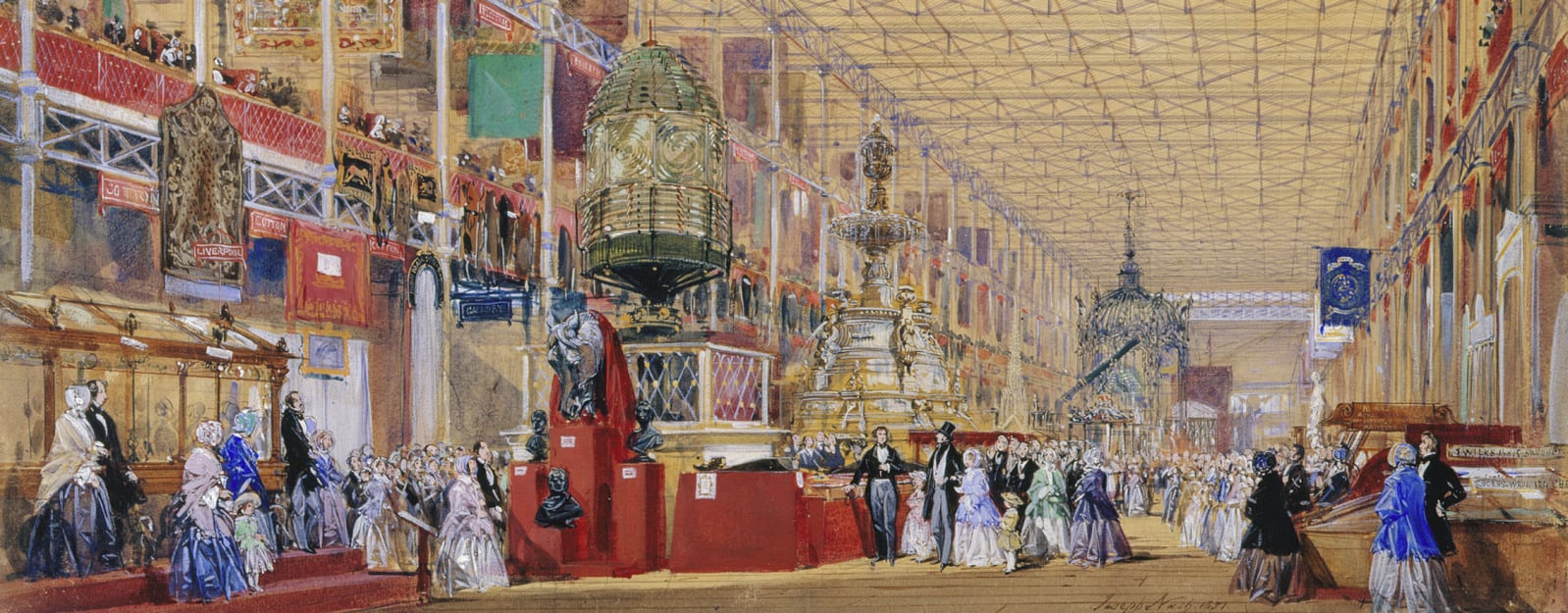
Prince Albert took a leading role in the organisation of the Exhibition
The beginning
The idea for the Exhibition originated within the Society for the Encouragement of Arts, Manufactures and Commerce (the Society of Arts) and is attributed to the civil servant Henry Cole. Throughout the mid-1800s there were a number of national exhibitions throughout Europe. In particular the Exposition of Products of French Industry of 1849 was an important source of inspiration and was visited by Henry Cole and other Society of Arts members such as Matthew Digby Wyatt and Francis Fuller.
Prince Albert had been President of the Society since 1843 and the idea of an international exhibition was put forward to him by his fellow members. It was an idea which he enthusiastically backed and in June 1840 he summoned Henry Cole, Francis Fuller, Thomas Cubitt and John Scott Russell to Buckingham Palace to discuss this proposition. This resulted in the first official meeting relating to the Exhibition and it was during this meeting that key decisions were made. Those present decided on the four main divisions of the Exhibition, which were to be Raw Materials, Machinery and Mechanical Inventions, Manufactures and Sculpture and Fine Art. It was also suggested that the Exhibition be opened to international exhibits. The site of Hyde Park was suggested by Prince Albert, as was a subscription system to raise funds.
While the early subscriptions covered costs of administration and the organisers’ time, it soon became apparent that greater capital was required, particularly with the need for a building to house the Exhibition. The members of the Society of Arts realised that they would need the authority and backing of a Royal Commission if they were to make the Exhibition a success. As a result, the charter for the Royal Commission was granted by Queen Victoria on 3 January 1850. Prince Albert became Chairman and an Executive Committee was formed including Henry Cole, John Scott Russell and Charles Wentworth Dilke.







